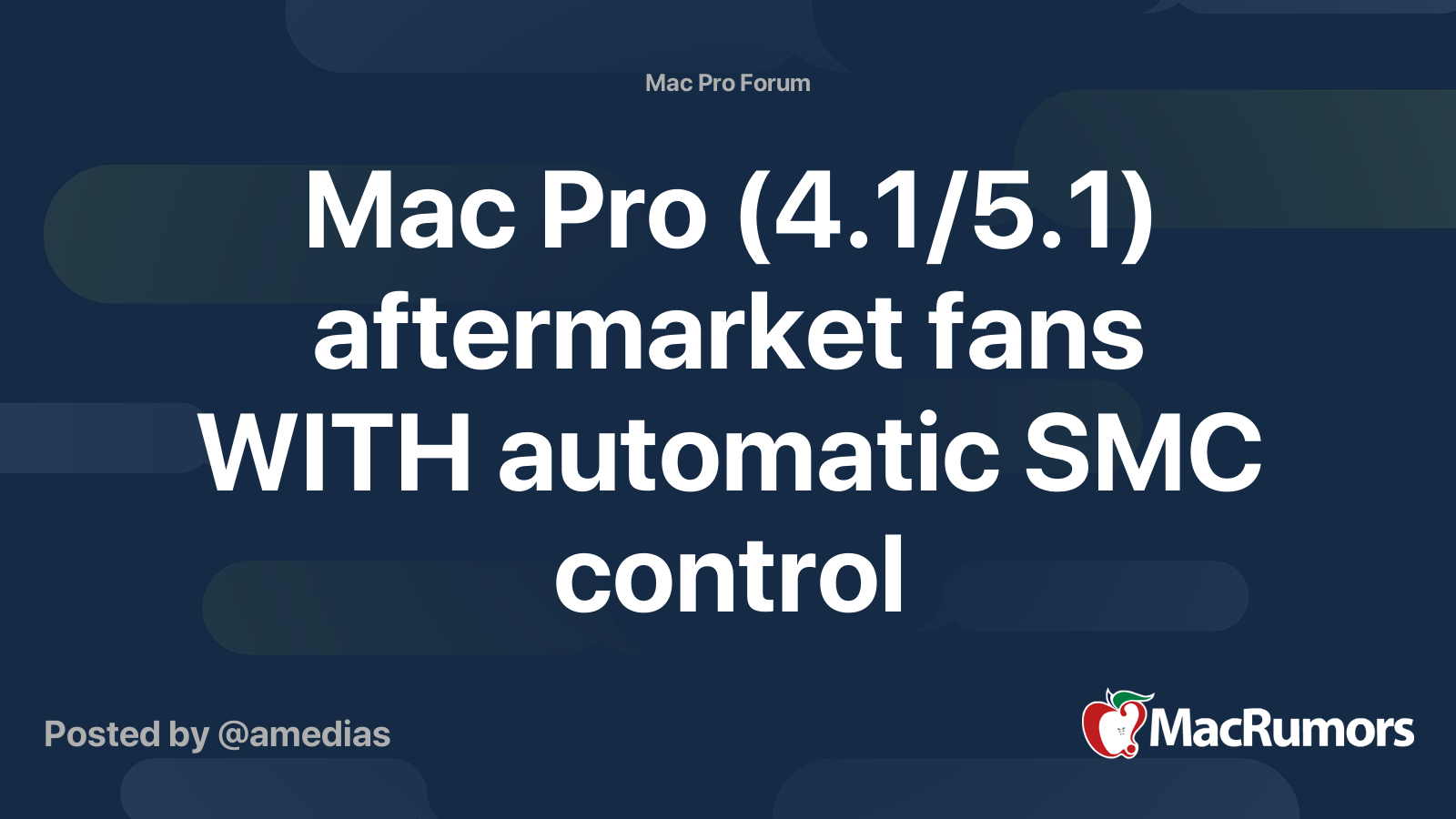I'm not happy with the (mechanical) noise coming out of my cMP (mid-2010/5,1) but am at loss what to do about it.
1) fans: mostly the power supply fan (not sure, but I think there's only one fan) which emits a constant and relatively loud humming sound.
The other fans (PCIe, front processor-cage, rear processor-cage) aren't completely silent but I can live with that.
There's also the ATI HD-5870 graphic card fan which I replaced recently (found a new fan on eBay). It's not completely silent, but I don't think I can get hold of any other replacements for this outdated graphic card.
Strangely, the Mac Pro service manual gives no mention of the power supply fan and neither lists it as a replacement part number, but rather the complete power supply as one part. The three other fans are all shown with their part numbers.
2) hard drives: it's not the spinning of the motors as far as I can tell, but the drive activity which gives off loud "ticking" or "crackling" sounds. This is especially noticeable when doing Time Machine backups as one of those drives are for that. The other drive is my main storage drive (I have SSDs for MacOS and my apps).
These are two "enterprise" hard drives, and the ticking can be clearly felt it I open up the computer and place my hand on the hard drive.
So I have some challenges here because (as far as I know), the fans can't just be replaced with some after-market types. There's a thread about this somewhere here, and from my understanding there are low noise Noctua branded fans which work, but there are all sorts of caveats. Geeky sort of stuff. I just want to replace the fan(s) and forget about it. As far as I know there's nowhere to get hold of original replacement fans either (?).
For the hard drives I'm wondering if some sort of mechanical rubber damping would help.
Maybe some special screws with rubber washers, or some rubber between the drive trays and the cMP access door (I had to buy a couple of new OWC drive trays/sleds to allow for the newer screw mounting pattern of my HDDs, and they're slightly off-specs when it comes to dimensions and mounting, meaning they (ublike the original Apple ones) slightly bulge against the cMP access door, sometimes causing vibration/resonance.
I'm sure I'm not the first person experiencing noise problems like this.
Does anyone have any suggestions/experiences with all of this?
1) fans: mostly the power supply fan (not sure, but I think there's only one fan) which emits a constant and relatively loud humming sound.
The other fans (PCIe, front processor-cage, rear processor-cage) aren't completely silent but I can live with that.
There's also the ATI HD-5870 graphic card fan which I replaced recently (found a new fan on eBay). It's not completely silent, but I don't think I can get hold of any other replacements for this outdated graphic card.
Strangely, the Mac Pro service manual gives no mention of the power supply fan and neither lists it as a replacement part number, but rather the complete power supply as one part. The three other fans are all shown with their part numbers.
2) hard drives: it's not the spinning of the motors as far as I can tell, but the drive activity which gives off loud "ticking" or "crackling" sounds. This is especially noticeable when doing Time Machine backups as one of those drives are for that. The other drive is my main storage drive (I have SSDs for MacOS and my apps).
These are two "enterprise" hard drives, and the ticking can be clearly felt it I open up the computer and place my hand on the hard drive.
So I have some challenges here because (as far as I know), the fans can't just be replaced with some after-market types. There's a thread about this somewhere here, and from my understanding there are low noise Noctua branded fans which work, but there are all sorts of caveats. Geeky sort of stuff. I just want to replace the fan(s) and forget about it. As far as I know there's nowhere to get hold of original replacement fans either (?).
For the hard drives I'm wondering if some sort of mechanical rubber damping would help.
Maybe some special screws with rubber washers, or some rubber between the drive trays and the cMP access door (I had to buy a couple of new OWC drive trays/sleds to allow for the newer screw mounting pattern of my HDDs, and they're slightly off-specs when it comes to dimensions and mounting, meaning they (ublike the original Apple ones) slightly bulge against the cMP access door, sometimes causing vibration/resonance.
I'm sure I'm not the first person experiencing noise problems like this.
Does anyone have any suggestions/experiences with all of this?



